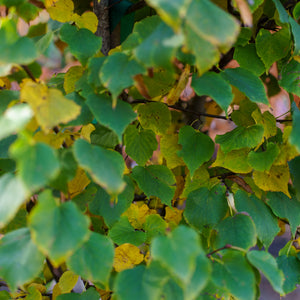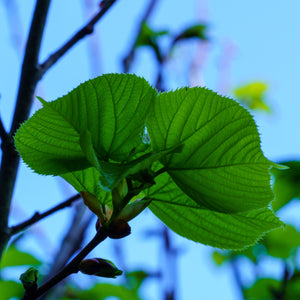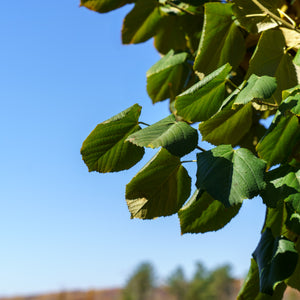The Linden Guide
Linden trees (genus Tilia), also commonly called basswood or lime trees (not related to citrus), are majestic deciduous trees prized for their symmetrical shape, heart-shaped leaves, and fragrant summer flowers. Known for their durability, elegance, and adaptability, lindens are commonly used as street trees, shade trees, and focal points in large residential or civic landscapes. Their dense canopies offer excellent shade, while their flowers support pollinators and add seasonal charm.
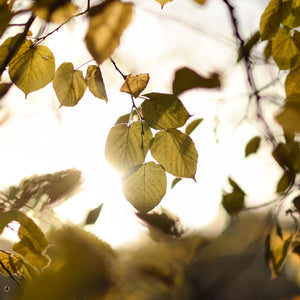
About
The Tilia genus includes about 30 recognized species, with several native to North America and Europe. These trees are known for their large size, graceful structure, and fragrant, nectar-rich flowers that bloom in early to mid-summer—attracting bees and other pollinators in abundance.
One of the most notable species is Tilia americana, or American basswood, which is native to the eastern United States and parts of Canada. Known for its broad crown and rapid growth, American basswood can reach 60 to 80 feet tall and is valued for its large leaves and sweet-smelling flowers. Cultivars such as ‘Redmond’ and ‘McKSentry’ offer improved branching structure and disease resistance.
Another widely used species is Tilia cordata, or littleleaf linden, native to Europe. This species features smaller leaves and a more pyramidal form than Tilia americana, making it ideal for street plantings and more formal designs. Popular cultivars like ‘Greenspire’ are widely planted for their uniform shape and high tolerance to urban conditions.
Tilia tomentosa, or silver linden, is native to southeastern Europe and is notable for its silver-backed foliage and greater drought and pollution tolerance. The cultivar ‘Sterling Silver’ is especially valued in city environments for its resilience and striking two-tone leaf coloration.
Tilia cordata x mongolica 'Harvest Gold' is a hybrid cultivar that offers golden fall color, a tidy form, and improved pest resistance, making it suitable for both residential and commercial landscapes.
Linden wood is lightweight and workable, traditionally used in carving, furniture, and musical instruments. Ecologically, linden flowers are essential nectar sources for bees, and the trees also provide nesting sites for birds and shade for wildlife.
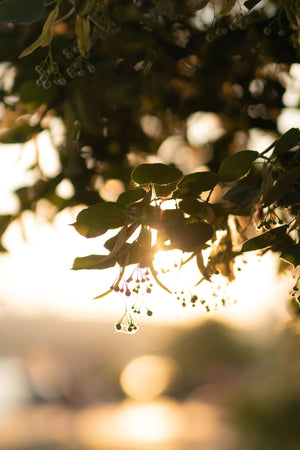
PLANTING
Linden trees establish well when planted correctly and given adequate space to grow.
USDA Hardiness Zones: Most linden species thrive in Zones 3–7, with some varieties adaptable to Zone 8.
Soil: Lindens prefer deep, fertile, and well-drained soils. They tolerate a wide range of soil types, including loam, sandy, or clay soils, but perform best in neutral to slightly alkaline pH.
Sunlight: Full sun is ideal for linden trees. They will tolerate partial shade, but growth may be slower and flowering reduced.
Watering: Provide consistent watering during the first few years after planting to establish a strong root system. Mature trees are moderately drought-tolerant but benefit from deep watering during dry spells.
Spacing: Given their large mature size, lindens should be spaced 30 to 50 feet apart depending on the cultivar. Avoid planting near sidewalks or structures unless using compact varieties.
Planting Time: Early spring or fall is the best time to plant linden trees. Container-grown specimens can be planted during the growing season with sufficient care.
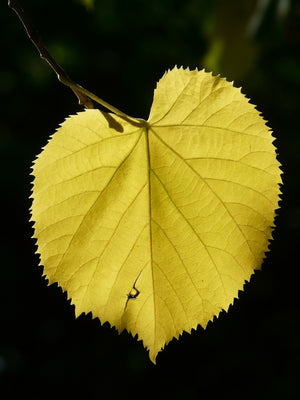
CARE
Watering: Deep watering is crucial during the establishment phase. For mature trees, water during extended drought periods to avoid leaf scorch or stress.
Fertilizing: Feed with a slow-release, balanced fertilizer in early spring to support healthy foliage and flower production. Established trees may only require light feeding every few years.
Pruning: Prune in late winter or early spring before bud break. Focus on removing dead, damaged, or crossing branches and shaping the tree for strong structure. Avoid excessive pruning, which can stress the tree and reduce flowering.
Pests and Diseases: Linden trees can be affected by aphids, Japanese beetles, and leaf miners. Aphid feeding may cause honeydew deposits, leading to sooty mold. Most infestations are cosmetic and manageable. Powdery mildew and verticillium wilt may also occur but are rarely serious on healthy trees.
Mulching: Apply a 2–3 inch mulch layer around the base to help conserve moisture, moderate soil temperature, and prevent weed competition. Keep mulch several inches away from the trunk.
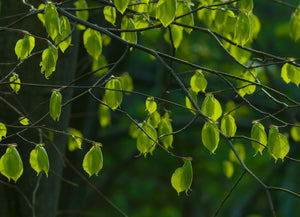
HOW TO USE
Focal Point: Linden trees make strong focal points in large residential landscapes, parks, or estates. Their uniform form and dense canopy offer visual balance, while their summer blooms add seasonal interest and fragrance.
Shade Trees: Tilia species are excellent shade providers. Plant near patios, lawns, or recreational areas where their cooling canopy can be appreciated.
Street Trees: Cultivars such as Tilia cordata ‘Greenspire’ or Tilia tomentosa ‘Sterling Silver’ are frequently used in urban environments for their narrow forms and pollution resistance. Ensure sufficient root space in sidewalk cuts or medians.
Pollinator Gardens: Linden flowers are highly attractive to bees and pollinators. Incorporate them into larger pollinator-focused landscapes alongside plants like echinacea, milkweed, and nepeta.
Formal Plantings: Due to their symmetrical form and tolerance for pruning, lindens are suitable for allées or evenly spaced rows along walkways, drives, and building facades.
Civic Spaces: Linden trees are widely used in cemeteries, campuses, and public squares where longevity, shade, and structure are valued.
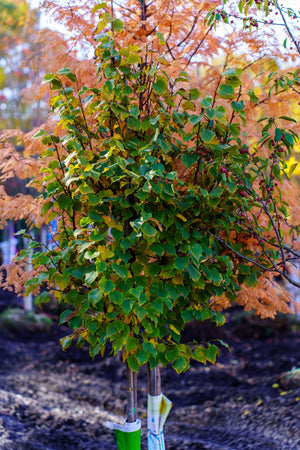
Common Questions
Where do linden trees grow? Linden trees grow throughout temperate regions of North America, Europe, and Asia. In the U.S., they are especially common in the Northeast, Midwest, and Pacific Northwest.
What does a linden tree look like? Linden trees have an upright, rounded to pyramidal shape. They feature heart-shaped leaves, fragrant yellow-white flowers in summer, and gray to light brown bark with shallow ridges.
Do linden trees flower? Yes. Linden trees produce clusters of small, fragrant, pale-yellow flowers in early to mid-summer, depending on species.
How fast does a linden tree grow? Growth rates vary by species. Tilia americana is fast-growing, adding 1.5 to 2 feet per year, while Tilia cordata grows at a moderate rate.
How tall does a linden tree grow? Mature linden trees can reach 50 to 80 feet tall, with a similar spread. Compact cultivars may remain closer to 30 feet tall.
How long do linden trees live? Linden trees are long-lived and can survive 100 to 150 years or more under good growing conditions.
Conclusion
Linden trees are stately, long-lived shade trees with wide applications in both urban and residential landscapes. Their fragrant blooms, elegant shape, and adaptability make them a top choice for gardeners and city planners alike. Whether used as a single focal point, a formal street tree, or a shade-giving canopy, lindens bring beauty, pollinator value, and lasting structure to any outdoor space.
The Linden Collection
Sold Out
Sold Out
Sold Out
Sold Out

